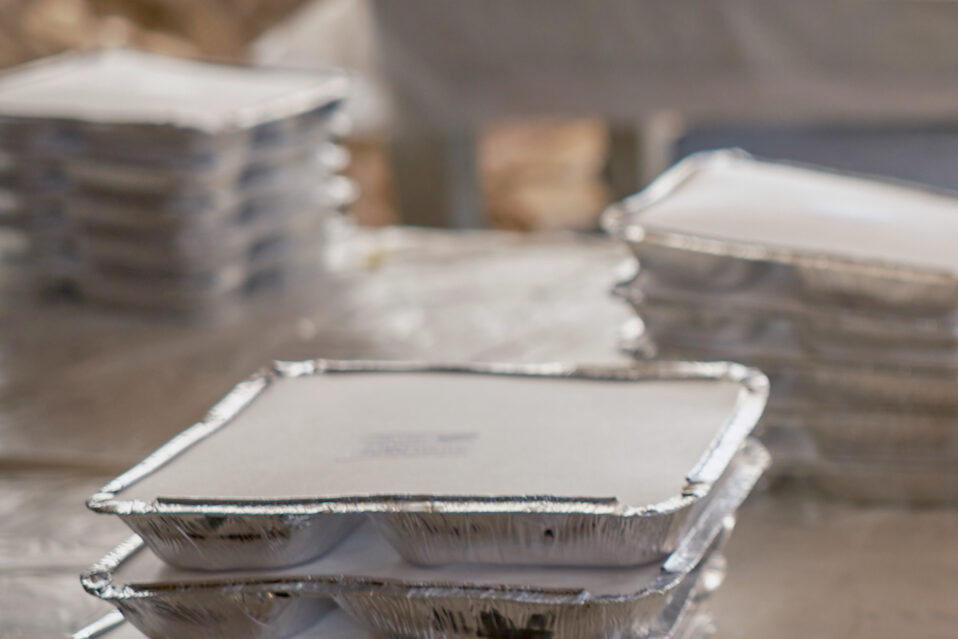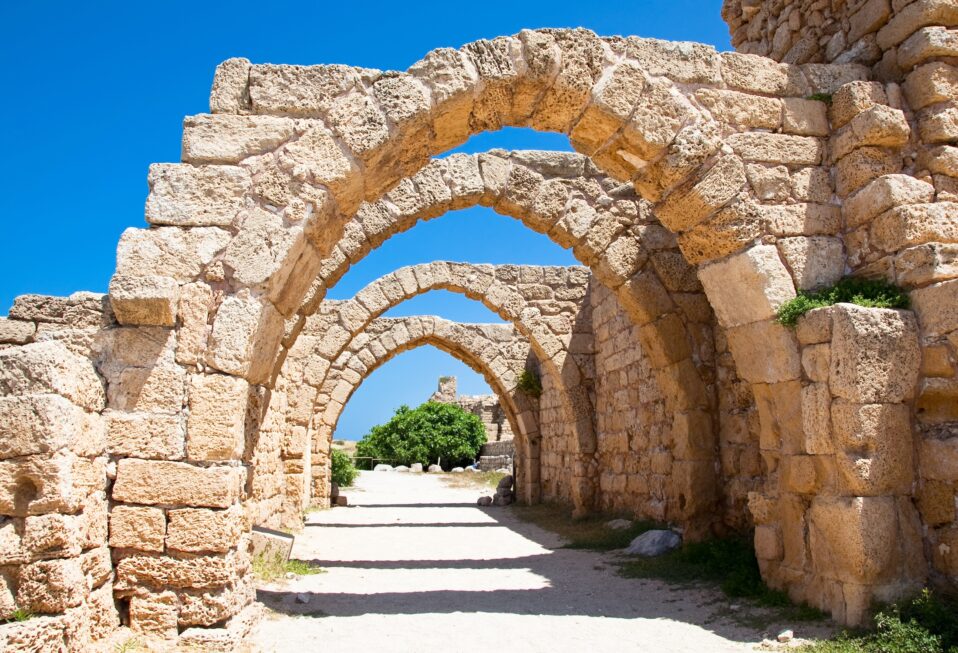By Arlene Bridges Samuels
Last night at sundown, Jewish families lit the first candle for their eight-day Hanukkah celebrations. Joining on Christmas Day this year, both Jews and Christians are celebrating light. As Anne Frank once observed, “Look at how a single candle can both defy and define the darkness.” During the last 14 months, Israel Defense Forces (IDF) have bravely defied their enemies in a seven-front war and “define[d] the darkness” every day with lights of victory.
Hundreds of thousands of Israeli reservists and active-duty soldiers have served in the IDF since October 7, 2023. According to the state of Israel’s requirement, any Israeli citizen over the age of 18 who is Jewish, Druze, or Circassian must serve in the Israel Defense Forces. In Gaza alone, during the Swords of Iron war, as of mid-December 386 soldiers have fallen in combat and 5,493 have been wounded. As we light a Hanukkah candle each night during Hanukkah, also called the Feast of Dedication or the Festival of Lights, such loss of life is heartbreaking.
For upwards of 7 million Jewish citizens, nearly everyone knows someone who has died, been wounded, or is missing. Prayers are lifted up for the remaining 100 hostages living in the darkness of evil. Isaiah 40:1-2 is an inspiring Scripture to pray for our Jewish friends in Israel and globally during their Hannukah Festival of Lights. “Comfort, comfort my people, says your God. Speak tenderly to Jerusalem, and proclaim to her that her hard service has been completed, that her sin has been paid for.”
During a time of sorrow and trauma, Israelis will light their candles each evening, signifying the single cruse of oil that miraculously lasted eight days in the Second Temple candelabrums while the priests made more of the specialized oil needed. Jewish families will eat latkes—the fried potatoes that celebrate the oil—and will dance, sing, and give gifts.
Amid the precious traditions, however, the Festival of Dedication is more significant today than candles, latkes, and gifts. It is a time where the victories already won by the IDF are miracles. Parents and grandparents will retell their children about the ancient victories won by the Maccabees who amazingly defeated King Antiochus IV Epiphanes.
The Greek (Hellenistic) king ruled the Seleucid Syrian Empire from 175 B.C. until his death in 164 B.C. He had desecrated the Temple, plundered its sacred vessels, outlawed circumcision, and burned sacred Scriptures. He adopted the name Epiphanes, which means “God manifest, illustrious,” and demanded that the Jews renounce their faith and worship him and his pagan gods. On the front side of a coin minted for Antiochus he is shown wearing a diadem, a crown.
The IDF, defending the world’s only Jewish state, is a modern replica of the brave Maccabees who rose up against Antiochus. The Islamic Regime and its proxies are the new versions of Antiochus and his pagan empire. The present-day ayatollahs worship a Mahdi, thinking of him as their Islamic savior. Their so-called “savior” allegedly forces the entire world into an oppressive caliphate, not the freedom already won by our Jewish Savior 2,000 years ago. If he were real, the so-called Mahdi would wear a diadem, a crown—as if he had the sovereign power to erase the world’s Jews, Christians, and anyone who was in opposition.
The modern Islamic Regime has already made its goals as clear as the brightest day on earth. That hateful, murderous regime targets its own population and is emblematic of Antiochus. Also, like Antiochus, the Islamic Regime will eventually suffer defeat based on what the God of Abraham, Isaac, and Jacob has voiced throughout Scripture.
Jewish children really enjoy hearing grown-ups retell the story of the Jewish “hammers,” the colloquial term for Maccabees. Everything came to a head when a Seleucid official tried to force Mattathias, a priest, to make a sacrifice to a pagan god. The Maccabees’ history unfolded from that moment in the already-desecrated Temple when Mattathias killed the enemy. Jews united under him and his five sons and led the liberation, becoming known as the Maccabees (Hebrew for “hammer”)—described as striking hammer blows against their enemies. Jews refer to them as Maccabees, but the family is more commonly known as part of the Hasmoneans.
Underestimating the Maccabees’ determination, both Antiochus and today’s Islamic Regime (and proxies) have underestimated Jewish resolve. Such resolve—matched with strategic brilliance—to defend their sovereignty and their citizens has been apparent since October 7, 2023. Antiochus first deployed a small force against the Maccabees, and when that force was defeated, the tyrant king sent in much larger, more powerful forces. But the persistent determination of his Jewish adversaries led to Jerusalem being recaptured by the Maccabees and the purification of the Temple—a massive victory that gave birth to the holiday of Hanukkah.
During the years when Maccabee defenders fought the Seleucids, Antiochus died and his successor agreed to Israel’s independence in 142 B.C., and after more than 500 years of occupation, Jews were free again. When Mattathias died, his son Judas, also known as Judah Maccabee, led the revolt. At the war’s end, only Simon, one of the five sons, survived. He ushered in an 80-year period of Jewish independence in Judea, Israel. The Kingdom regained boundaries, most of Solomon’s realm, and Jewish life flourished. The Hasmoneans claimed the throne of Judah.
Now, despite the small nation of Israel fighting a seven-front war, the successes of the “modern Maccabees” are beyond imagination too! The highly respected native Israeli, Amir Tsarfati, president of Behold Israel and international Bible teacher, highlights some of the near-miraculous IDF successes. He mentions that Israel now has a buffer zone in both the north and the south where terrorists cannot simply pour over the border. Hezbollah, Hamas, and Iran in Syria have been decimated, both their leadership, manpower, and weaponry (ground and aerial).
Syrian President Assad, a dictator whose regime killed hundreds of thousands of Syrian citizens, has fled to Russia. Israel has made sure that the massive store of weapons that he and his welcomed Iranians left behind is not usable by any rebel or terror groups who take over. Go to Behold Israel on Telegram and other social media for Amir’s commentary and news.
On December 17, it was an extraordinary moment when Prime Minister Netanyahu stood in Syria on the peak of Mount Hermon with his military leaders making Israeli security assessments for the future. In a video, he commented that it was “nostalgic” to be in Syria once again after 53 years when he was “with his soldiers in the elite Sayeret Matkal unit.” He announced that the IDF would remain in Syrian buffer zones until “other arrangements were made.” An ancient and modern connection in Syria where the Maccabees won each time!
Israel’s defensive war goes on, yet their achievements bring fresh light into Hanukkah 2024. If you wish to discover additional fascinating details and facts about the Maccabees, read 1 and 2 Maccabees. They were included in Catholic Bibles, omitted from Protestant Bibles, and I am glad that Amazon has not omitted them!
Prayer Points:
- Pray for Israelis to have a calm Hanukkah inside their borders where they may safely walk, drive, and celebrate.
- Pray for families and friends of imprisoned hostages, that comfort will pierce their unrelenting grief.
- Pray with thanks that Lebanese Christians are openly expressing their love for Israel.
- Pray and praise God that the cruel Assad is no longer in Syria.
- Pray that world leaders will have wisdom in evaluating any new leaders in Syria.















